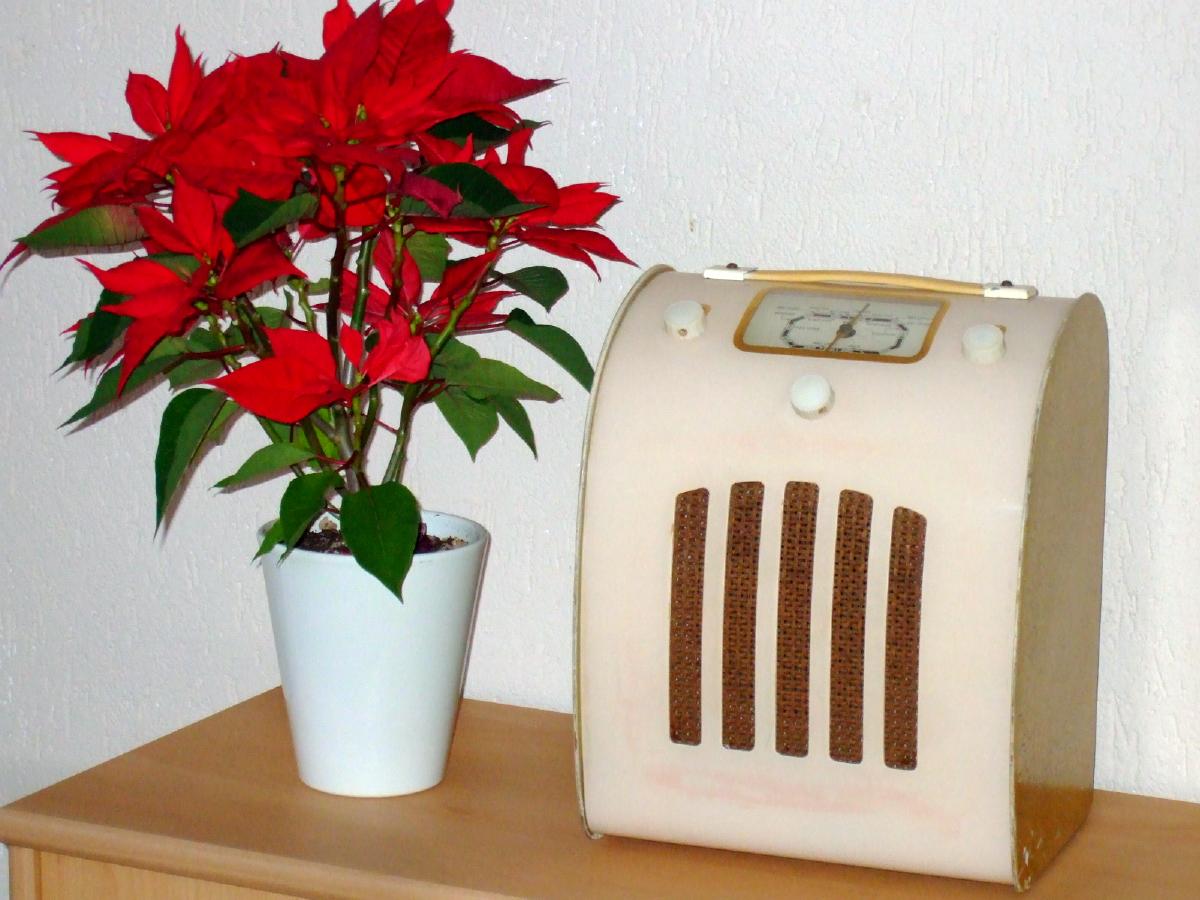
 The chassis can easily be taken out in one piece, together with the loudspeaker and frame antenna. The antenna is mounted on the chassis and consists of a 23x23cm frame with 18 windings of litze wire. The antenna is in the back of the cabinet.
The chassis can easily be taken out in one piece, together with the loudspeaker and frame antenna. The antenna is mounted on the chassis and consists of a 23x23cm frame with 18 windings of litze wire. The antenna is in the back of the cabinet.

168
Item nr.

Curved mobile audio.
| Production | England, 1950. |
|---|---|
| Bands | LW (800-2000m), MW (200-560m). |
| Tubes | DK91/1R5 (converter), DF91/1T4 (IF), DAF91/1S5 (det., AF), DL92/3S4 (output). |
| Cabinet | Transparant material with back paint, Wood frame. Size 26x32x20 cm. Weight 4.6 kg. |
| Power | Battery 75 and 1.5 V combined. |
| Documents | Schema. |
The power is not switched with the volume control, as with most radios, but with the band switch. Between the LW and MW positions, there is a third one marked OFF.

 The chassis can easily be taken out in one piece, together with the loudspeaker and frame antenna. The antenna is mounted on the chassis and consists of a 23x23cm frame with 18 windings of litze wire. The antenna is in the back of the cabinet.
The chassis can easily be taken out in one piece, together with the loudspeaker and frame antenna. The antenna is mounted on the chassis and consists of a 23x23cm frame with 18 windings of litze wire. The antenna is in the back of the cabinet.
| Obtained | 1/2001 from Piet Hoen, sn=C129728. |
|---|---|
| Condition | 8. |
| Disposed | Sold 5/2020. |
| Sound sample | PLAY SOUND Radio 5 is leaving it up to us, by mouth of Bill and Grace. |

 Ever Ready was a battery manufacturer, and the main purpose of producing the radio was selling more batteries. The radio was powered by one battery, containing filament and plate cells, but these can now no longer be bought. I soldered onto the connector a battery holder for two AA cells and a clip for a 90V rechargeable plate battery. The leads are: Brown=+1.5, Black=-1.5, Red=+90, Yellow=-90.
Ever Ready was a battery manufacturer, and the main purpose of producing the radio was selling more batteries. The radio was powered by one battery, containing filament and plate cells, but these can now no longer be bought. I soldered onto the connector a battery holder for two AA cells and a clip for a 90V rechargeable plate battery. The leads are: Brown=+1.5, Black=-1.5, Red=+90, Yellow=-90.
The cabinet of this radio is quite remarkable. The case looks yellowish, but it isn't: the outside is made from an early form of transparent plastic, painted on the inside. Except where the dial is. Yes, the dial glass and cabinet are indeed moulded in one piece, but is simply unpainted in front of the dial. It is not possible to feel where the dial glass is.